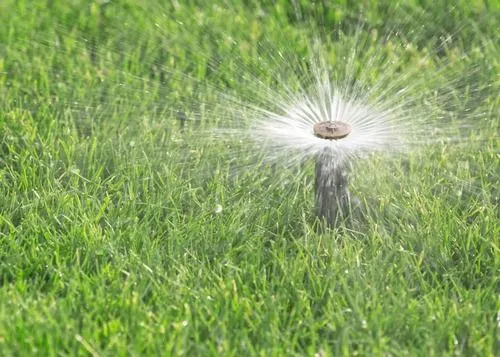One of the most important and often underrated qualities of a safe and secure property is a property that is properly drained. North Texas is no stranger to a deluge of rain, and our clay-heavy soil can quickly become waterlogged. Waterlogged soil can’t absorb any additional water, and this creates flooding conditions that can range from minor and inconvenient to major and potentially devastating. And if your property has any sort of slope on it, this means you could find yourself dealing with flooding at some point.
But how do you know if your drainage is good enough? Are you protected from the potential flooding that heavy rains can bring? Is your landscape properly shielded from the damage that an excess of standing water can bring? Here are three signs that your drainage might not be adequate for your property, and what you should do to improve your drainage for better safety and security.
Visible Puddles
Puddles will form in areas where grading or sloping prevents water from properly draining away. These can be found almost anywhere, including in the middle of your lawn, along the sides of your home, or up against your patio or walkways. If any area of your property slopes towards your home, you should keep an eye out for puddles alongside your home in these locations. When the soil immediately around your home becomes waterlogged, the soil can become unstable, causing the potential for damage to your foundation, and foundation damage can be devastating as well as costly.
After a heavy rain, it helps to walk around your home and look for puddles that seem to stay for days at a time. These are areas where there may be a very small slope that prevents water from flowing away normally, and these are areas that should be properly evacuated with a drainage system.
Areas That Rarely or Never Fully Dry
Puddles are not always visible, but that doesn’t mean moisture isn’t a problem. In fact, moist or waterlogged soil can present a number of issues and be a sign of improper drainage. This is particularly the case on land that is completely or nearly flat. Whether from overwatering, an overabundance of rain, or any other source of water, any area that seems to be far too moist is an area that probably has a drainage issue that needs to be addressed.
When looking for puddles, also take note of any areas that seem to be extremely wet (as in to the point where you hear and see water squeezing out of the soil when you step on it. After a few days of dry weather, go back and re-inspect these areas and see if the problem persists. If it does, then you should strongly consider properly grading as well as installing a surface drain in this area to prevent any water from putting this area at additional risk.
Cracks in Your Patio or Sidewalk
As we mentioned previously, North Texas is notorious for clay-heavy soil that is not all that good at absorbing water. It doesn’t take much to completely saturate the first several inches of soil in most areas of the metroplex, and water that this soil can’t absorb often just sits in the ground causing the soil to become loose and bow or buckle. As the soil shifts, it can cause cracks or damage to concrete structures up above, particularly as the added water balloons upward and places additional pressure on the ground above it.
Keep an eye on your patio, particularly near any areas where you know water tends to accumulate in heavy rains. If you notice that these areas are starting to shift, crack, or buckle, don’t hesitate to take action and install better drainage to prevent further damage from potentially jeopardizing this valuable outdoor space. Likewise, if this area is located near the foundation of your home, installing drainage right away can greatly increase your protection against unwanted foundation damage.
Learn more about installing a superior drainage system with a surface or French drain from the team at Purple Care! Call (817) 880-6052 and schedule an appointment today.




Comments (0)
Thanks for your comment!
Thanks for your feedback! Your comments have been successfully submitted! Please note, all comments require admin approval prior to display.
Error submitting comment!
There is a problem with your comment, please see below and try again.